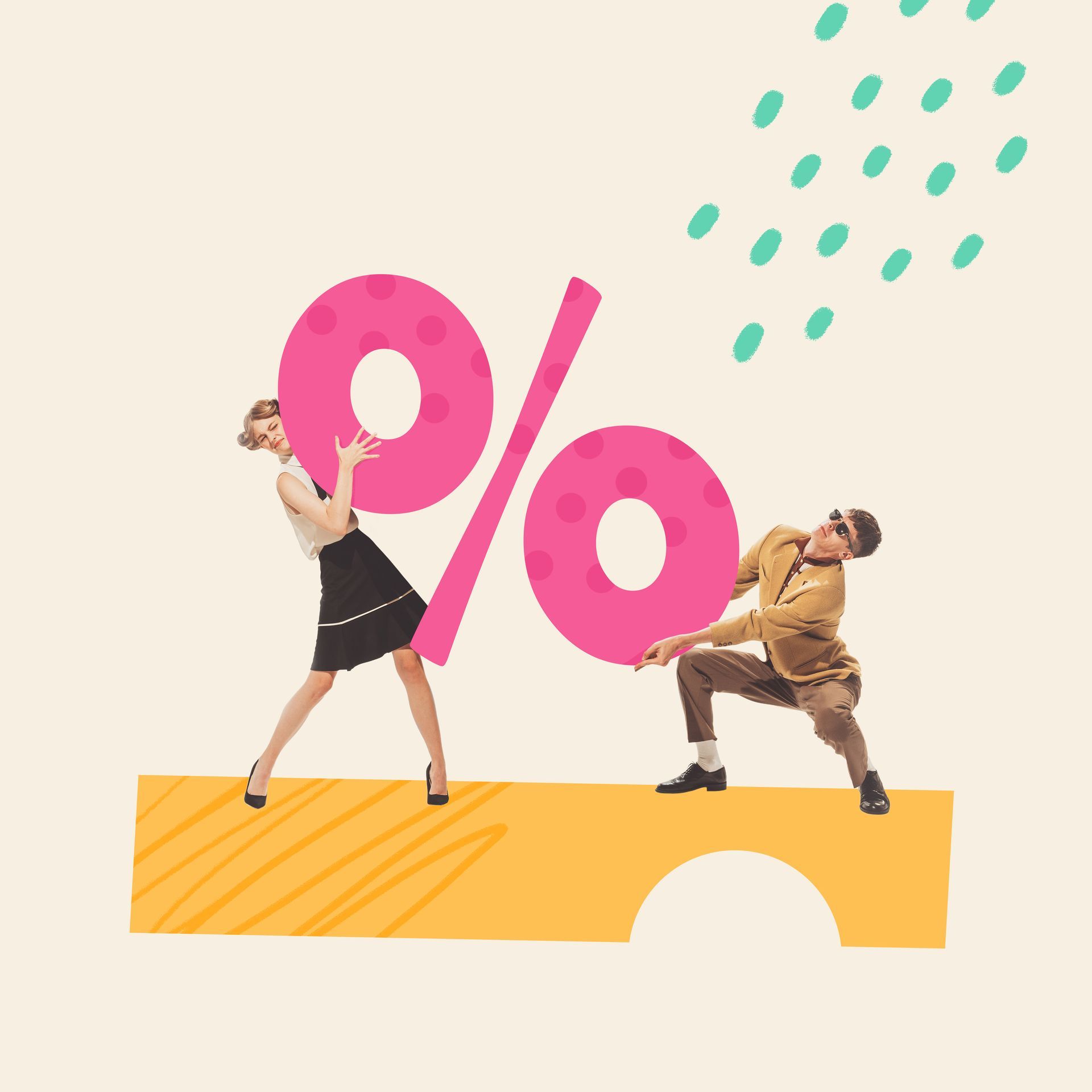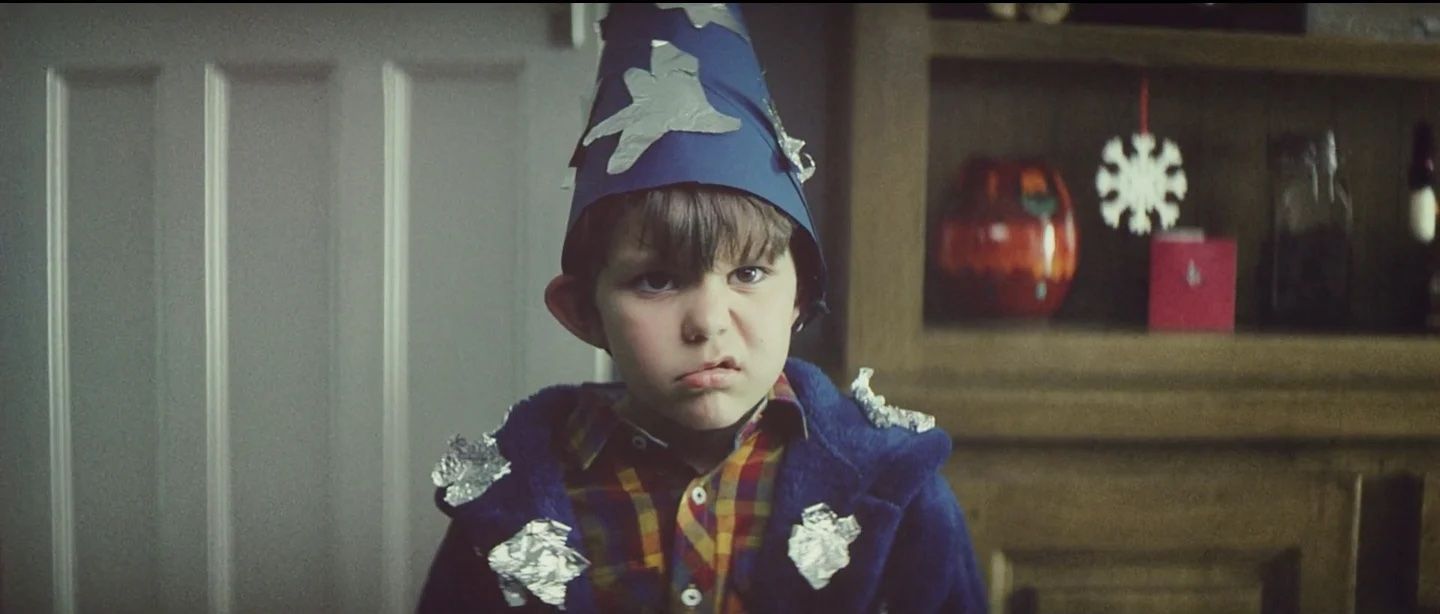brain
Fodder

Whoop! You made it past Black Friday – here’s how to never need this dark discount day ever again… In our last post, we gave you 5 reasons to say no to the darkness that is Black Friday discounting, especially if you are a small business. But what if this all feels a bit terrifying, especially when you check your emails, and it feels like the entire world IS doing Black Friday? Well, here is our guide to a few things you can start working on NOW, to make sure you never get FOMO about Black Friday ever again! Know your value By this, we mean that you need to understand why customers choose you over your competitors – coffee is a great example here – there are literally hundreds of places you can buy coffee these days, but if you asked most shoppers, they won’t cite the coffee as being the reason they go to Costa, Starbucks, Greggs or the independent cafe, anywhere near as often as you think. It will be the atmosphere, the must-have seasonal mug design, the free Wi-Fi or the price. So, understanding what you offer customers that is different to your competitors, will set you on a path that makes it hard for competitors to replicate what you offer, and easy for you never to have to compete with them on price again. Quality beats quantity. Always. When it comes to being able to hold your price, it’s quality you need to focus on, to avoid the Black Friday blues. Where can you make the experience you offer great quality, or are there things you can do to enhance your product quality, so people understand that when they pay for your service, they’re getting a quality that they won’t get elsewhere? Be true to your values You don’t have to join in with Black Friday, just because the rest of the world is doing it, and it’s okay to let your customers know why that is – if being sustainable is part of what you are all about, then let customers know! Providing that what you’re saying matches up with the perceptions your customers have about you, then it’s a good thing to be honest about stuff like this – it helps customers understand that you’re authentic, and this, in turn, will help to make your brand strong in the long run. And what’s the result of a strong brand? No need to discount – ever (if you don’t believe us here, just have a think about the last time you saw Apple advertise any discounts…)!

5 reasons to say no if you’re a small to mid-sized business Black Friday, the day following Thanksgiving, for some reason, has become synonymous in the UK, as well as the States, with bargain hunting and shopping sprees. Beneath the surface of seemingly attractive deals and bustling storefronts, there is more to Black Friday than meets the eye. And if you’re a smaller business here’s 5 very good reasons you shouldn’t get suckered into competing with the big boys! 1. Margin Erosion Surprisingly few businesses really understand the margin they make on individual products or services. By introducing the level of discount shoppers look for on Black Friday can land you in a precarious position, without even realising it. Realistically, the kind of deep discounts shoppers are dazzled by are only successful if you can sell in high volume. If you don’t have the size and scale of a bigger business, then you won’t achieve the sales you need to compensate for slashed prices. This lack of volume can lead your business to experience real financial strain not just now, but in the next calendar year. 2. Operational Challenges Ok, you’ve ignored the advice on slashing prices, and you think you can go for it…what could possibly go wrong? Well, don’t forget how you’ll really deliver. The surge in traffic on Black Friday can overwhelm businesses (punch up in Asda anyone?). Long queues, inventory management issues, disruption to regular sales and businesses operations can create negative impact that really affect the customer experience. A shopper will be quick to forget the discount when the experience has been like hell! 3. Team burnout So you think you can slash the price; your operations can totally deal with it – what else? Well, don’t forget your people. The demand of Black Friday often requires extended hours and high stress interactions with customers. It's likely that you’re already going to ask a lot of your team with the Christmas holidays around the corner, so it’s worth asking now – ‘should I do this to them?’ This is where the immediacy of sales can have impact on the long term - burnout, reduced morale, and increased turnover rates are very real challenges, which can all be triggered by that Black Friday rush – eek!

As the clocks go back…and the nights draw in, we snuggle up in cosy socks, warm jumpers, sip pints in pubs next to roaring fires and eat casseroles for dinner. And the change of the clocks means one more thing, the imminent release of the eponymous John Lewis Christmas ad (other ads are available, but rarely as hotly anticipated). What do our feelings about the winter season and John Lewis have in common? Nostalgia - as big as a dollop of sherry trifle. It’s the emotional thread that weaves together past and present, creating a powerful connection between brands and their audience. Nostalgia is the sentimental longing for the past and evokes powerful emotions, which is why advertisers are very quick to use it, especially at holiday time. It transports us back to cherished moments, conjuring feelings of comfort, security, and happiness. When used effectively, this emotional resonance can significantly impact consumer perception and behaviour. And when times are particularly difficult, when people are experiencing all manner of hardships, this nostalgia becomes more powerful than ever. Nostalgia establishes a sense of trust and credibility between a brand and its audience. By tapping into shared cultural or generational experiences, brands demonstrate an understanding of their customers' history and values and connects with them. This familiarity fosters a sense of belonging, reinforcing the idea that the brand is a reliable companion on their journey. In John Lewis’s case we relate to the anticipatory feelings of the little boy in the Long Wait, or we think about distant relatives who we might like to see, like the Man on the Moon A brand associated with positive memories and experiences from the past is more likely to be viewed favourably in the present. Nostalgic marketing triggers positive associations, making consumers more inclined to choose a product or service that evokes those warm, fuzzy feelings – John Lewis use it to show how embedded they are (or would like to be) in your family traditions. Nostalgia also offers a unique avenue for differentiation. By invoking memories of a simpler time or a cultural touchstone, a brand can distinguish itself from competitors, creating a distinct identity that resonates with consumers – for John Lewis, this links to a time when we more often physically went to a store instead of cyber space to buy our Christmas gifts. The Christmas shopping event being part of our Christmas tradition, alongside social activities, and ‘family’ – we’re not just buying ‘stuff’, we’re creating our narrative, our way of doing things and our children’s future traditions – it’s powerful, heady stuff! Nostalgia has the power to leave a lasting impression. A well-crafted nostalgic campaign can etch itself into the collective memory of a generation. This year, it’s no coincidence that the tune the John Lewis team have picked is Imagine, by John Lennon, bought up to date by Lewis Capaldi. First released to speak to a generation which felt like it lacked hope, peace, and security – sadly, this has deep connection for all of us today. In an era defined by constant change and innovation, nostalgia serves as a powerful anchor, grounding brands in the hearts and minds of consumers. And whilst I wouldn’t necessarily predict a hugely rosy future for John Lewis on the high street, it will no doubt stay in our collective consciousness for a long time to come.

We're excited to be back at Salon International this weekend for the second year in a row. Last year we were talking all things digital and this year we'll be discussing all things brand. We'll be on the Business Live stage on Saturday 14th October at 3.30pm and we're excited to be joined by Nuala Morey, Jo Martin and Robert Eaton - we look forward to seeing you there.

In the noisy landscape of modern marketing, standing out requires more than just a unique product or service. It demands a distinctive personality that resonates with and simplifies things for your audience. This is where brand voice and tone come into play. WHY YOUR BRAND VOICE IS IMPORTANT Your brand voice is the consistent expression of your brand’s personality through written and spoken communication. It encompasses the style, language, and values that characterise how a brand interacts with its audience. A strong brand voice sets the stage for a recognisable and memorable brand. Thinking about the words you and your teams use is the key – for example, does your brand say Hi, Hello, Alright, Good Morning or something else to greet a customer, each word conveys the same message but the feeling it creates around your brand is different. It’s not just all about the feeling, your brand voice also delivers some useful brand and business benefits: It establishes consistency - A consistent brand voice and tone build familiarity and trust. When your audience knows what to expect, they are more likely to engage and connect with your brand. Think of the language used by Apple, it’s always quite simple, but elegant and paired back with hints of innovation. It differentiates you - In a crowded marketplace, a distinctive voice and tone set you apart from competitors. It's what makes your brand memorable and recognisable. It builds connection - Emotions drive consumer behaviour, fact! A well-defined brand voice and tone help evoke the right emotions, fostering a deeper connection with your audience.

Peak-End Theory: How psychology can change your brand! Psychology and marketing Marketing is all about creating memorable experiences that leave a lasting impression on consumers. One psychological principle that plays a crucial role in shaping these experiences is the Peak-End Theory. In this article, we'll demystify this theory and explain its significance for your business. What is Peak-End Theory? The Peak-End Theory, proposed by Nobel laureate Daniel Kahneman, suggests that people tend to judge experiences based on two key moments: The peak - the most intense or pleasurable (or terrible) point in an experience The end - how the experience is concluded. This means that the most intense and the final moments of an experience are disproportionately influential in how we remember and evaluate it and therefore disproportionately affect our customer experience and our opinions on brands. By understanding the Peak-End Theory, businesses can focus on creating positive, memorable moments at key touchpoints. This might involve exceptional customer service, seamless online experiences, or delightful surprises that leave a strong, positive impression How does this play out in business? Peak end theory applies to all businesses whether you’re working with other businesses or consumers, whether you’re in physical or digital spaces. Physical businesses - If you’re lucky enough to see your customers in person, watch their behaviour, watch the order in which they do things and pay very close attention to the last moments in particular as these are a chance to turn a great experience bad – ever had to wait too long for the bill? Ever nipped to the loo before leaving a place, and really wished you hadn’t? That’s peak end theory! Digital businesses - For online businesses, ensuring a smooth and pleasant user experience is critical. The "peak" in this context could refer to the moment of discovering a product or service, while the "end" is the checkout process. A user-friendly interface and a hassle-free checkout experience can significantly impact customer perception – too many clicks, not having the right payment options, or simply having to repeat information over and over can all damage to the end of the customer experience. How can I try and influence the peak and end in my business? If you want to try and implement strategies to influence Peak-End Theory in your business – here’s some things to try: Crafting Memorable First Impressions - The initial encounter with a customer is a pivotal moment. Applying the Peak-End Theory, place special emphasis on make the first interaction stand out. Whether it's a warm welcome, a personalised greeting, or an engaging introduction to products or services, strive to create a peak moment that leaves a positive and lasting impression – and get the whole team focused on it! Designing Intuitive User Experiences - For online businesses, the user interface serves as a critical touchpoint. When applying the Peak-End Theory, focus on ensuring a seamless and enjoyable user experience. By prioritising user-friendly navigation and intuitive design and reducing the amount of aggravation given to the customer (even if it causes you a little more) is the key to a positive peak! Prioritising Exceptional Customer Service - The resolution of customer inquiries or concerns is a key opportunity to apply the Peak-End Theory. Providing a timely, effective, and empathetic response will ensure everything ends on a positive note, leaving a strong and favourable impression Creating Memorable Unboxing Experiences - For businesses that involve physical products, the unboxing experience represents a unique opportunity to apply the Peak-End Theory. Take special care in designing packaging that not only protects the product but also elicits excitement and anticipation. This attention to detail creates a peak moment that enhances the overall customer experience. Seeking Feedback and Continuous Improvement - Applying the Peak-End Theory also means valuing customer feedback. Actively ask for input to understand where you can further enhance their experience. While Peak-End Theory might seem like a complex concept, its application in marketing is straightforward and highly effective. By recognising the significance of the peak and end moments in customer experiences, businesses can strategically design interactions that leave a lasting, positive impression. Ultimately, understanding and applying this theory empowers businesses to create memorable experiences that lead to increased customer satisfaction, loyalty, and success in the market.

